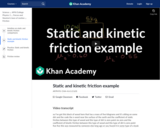
Thinking about the coefficients of static and kinetic friction. Created by Sal Khan.
- Subject:
- Physical Science
- Physics
- Material Type:
- Lesson
- Provider:
- Khan Academy
- Provider Set:
- Khan Academy
- Author:
- Sal Khan
- Date Added:
- 06/20/2011

Thinking about the coefficients of static and kinetic friction. Created by Sal Khan.
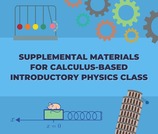
The modules posted below aim to provide digital resources for students and instructors. Providing students on-demand digital, multimedia, open-access resources which can be watched repeatedly at convenient times can serve as one path to improving student success in introductory physics courses The modules have been created for each topic covered in calculus-based introductory physics courses. Each module includes:Videos reviewing the laws and concepts, and videos with step-by-step problem solving providing students with additional aid in learning the material. (i) Review Videos summarize major topics after students had encountered them in class and highlight their application to common and significant problems. This resource incorporates explanations, derivations, and demonstrations to illustrate a concept; (ii) Problem-Solving Videos present detailed solutions to multi-step questions which students might encounter when working through textbook problems or on major summative assessments. This in-depth approach was structured to guide students in improving their problem-solving skills and techniques, as well as address common mistakes. More than one hundred videos have been created for different types of learners. This is a resource for both students and instructors.Textbook-independent homework problem sets that could be implemented via LMS. The homework has a mix of multiple-choice and free-response problems aiming to develop student critical thinking. Detailed solutions to all problems are provided so that the students can compare their results with the solution, or an instructor can understand what was intended for the solution if modification of the problem is desired. This is a resource for both instructors and students. Video demonstration experiments for each topic that will allow the instructors around the State of Texas to bring physics experiments to their classrooms (instructor resource). The videos merely show the experiment taking place without any explanation of the underlying physics. This gives the instructor complete freedom to tailor the explanation to their class. A text with a brief description of the experiments is provided.


Video demonstration experiments show the laws and concepts in action.

Review Videos summarize major topics. This resource incorporates explanations, derivations, and demonstrations to illustrate a concept.
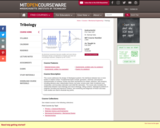
This course addresses the design of tribological systems: the interfaces between two or more bodies in relative motion. Fundamental topics include: geometric, chemical, and physical characterization of surfaces; friction and wear mechanisms for metals, polymers, and ceramics, including abrasive wear, delamination theory, tool wear, erosive wear, wear of polymers and composites; and boundary lubrication and solid-film lubrication. The course also considers the relationship between nano-tribology and macro-tribology, rolling contacts, tribological problems in magnetic recording and electrical contacts, and monitoring and diagnosis of friction and wear. Case studies are used to illustrate key points.
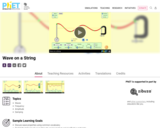
Watch a string vibrate in slow motion. Wiggle the end of the string and make waves, or adjust the frequency and amplitude of an oscillator. Adjust the damping and tension. The end can be fixed, loose, or open.
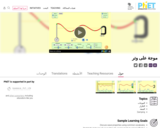
Watch a string vibrate in slow motion. Wiggle the end of the string and make waves, or adjust the frequency and amplitude of an oscillator. Adjust the damping and tension. The end can be fixed, loose, or open.